MOMENTUM
Adaptation is the art of survival
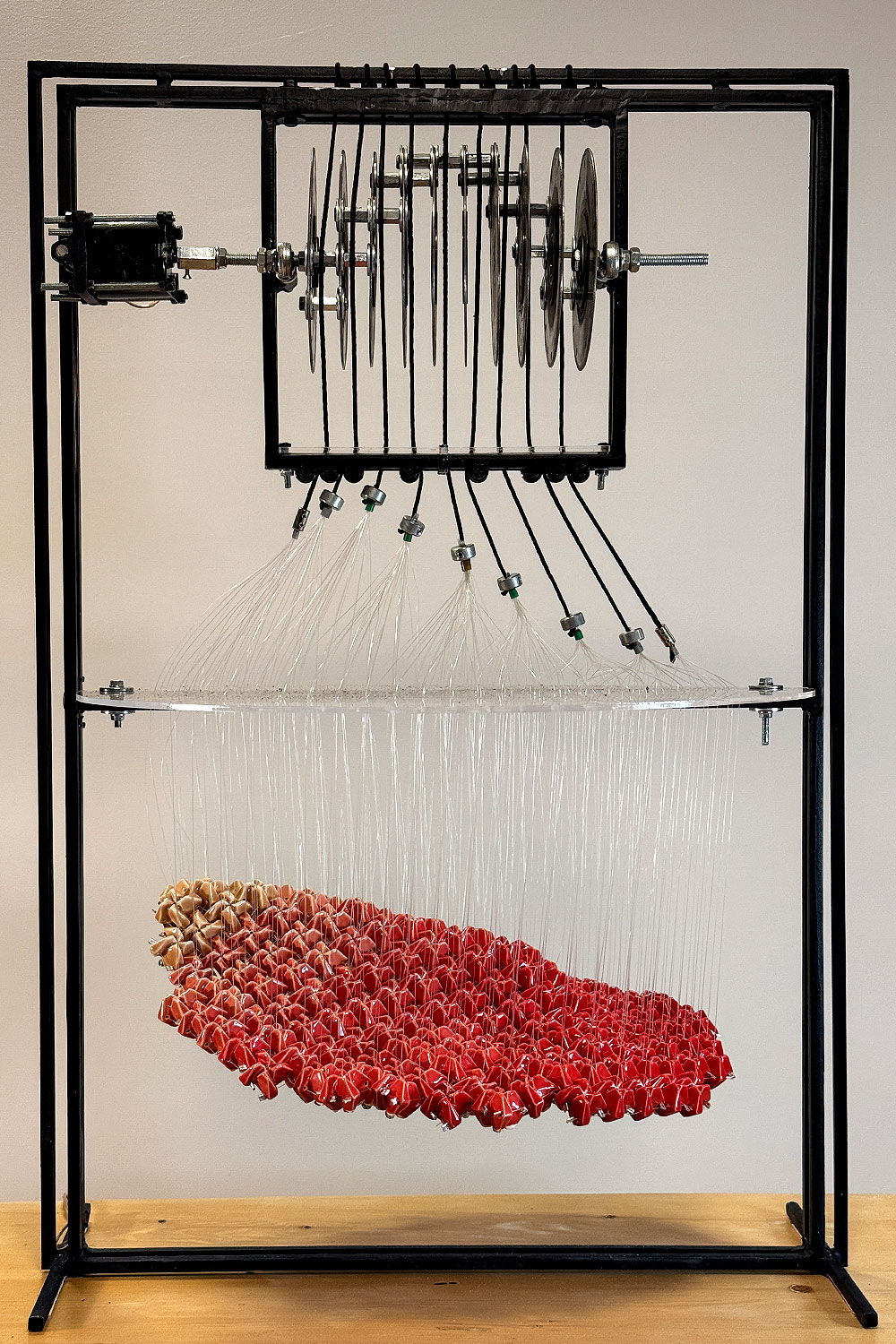
This piece is composed of 221 ceramic units, each individually crafted and then assembled together. The interlocking of these units creates a woven, cohesive surface that feels both structured and alive. The overall form emerges from this dialogue between the parts and the whole.

The structure takes on a flowing, wave-like form. Its curves and subtle shifts create a rhythm that moves between repetition and variation. As a result, the work offers a new image from every angle and distance, never reducing itself to a fixed appearance.

The color palette moves from skin-like peach tones to deep crimson reds. This progression not only suggests warmth and vitality but also reflects a journey from harmony to tension. The shift toward red evokes the imagery of strain, wounds, and rupture, lending the surface both human resonance and emotional depth.
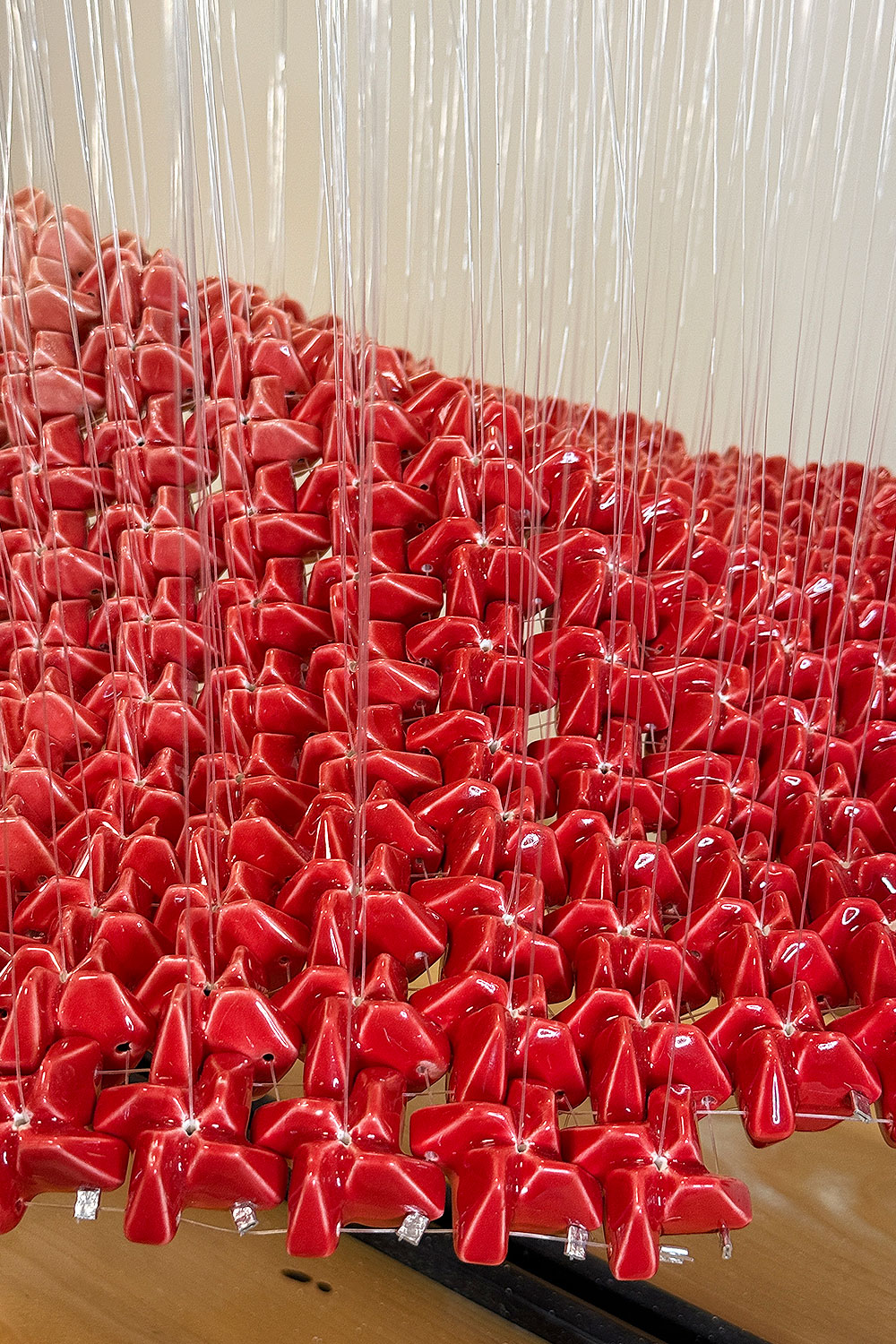
Each unit is shaped with meticulous attention to texture and surface treatment. The play between rough and smooth, matte and glossy, creates a striking contrast across the composition. This precision in detail and assembly results in a structure that reads as a unified form from afar, while revealing rich intricacies up close.
Mechanical Parts
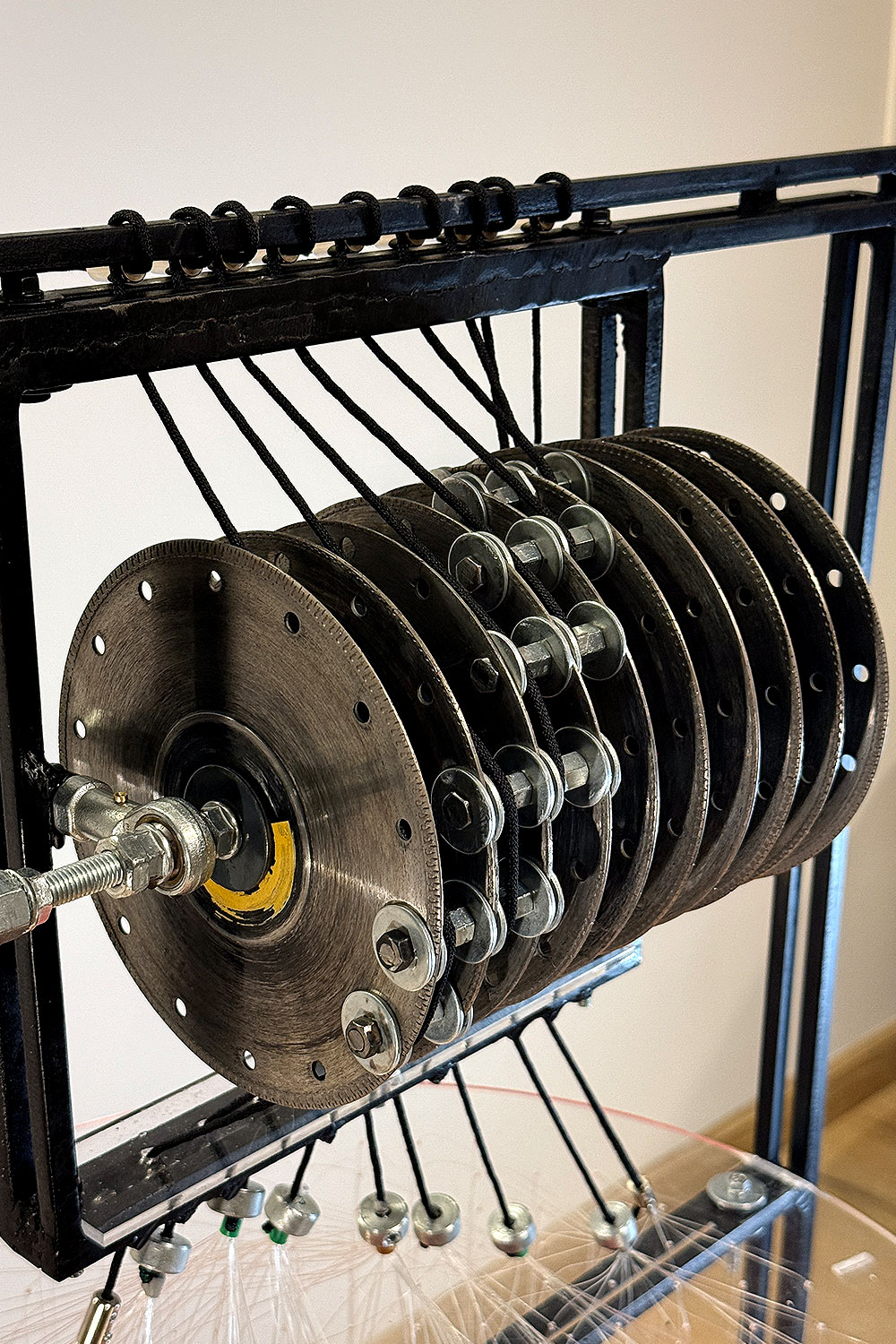
Discs
The mechanical system is built around a sequence of metal discs aligned along a central axis.
Each disc is carefully perforated with holes, serving as attachment points for the threads that connect to the ceramic elements. The spacing of the discs is adjusted with washers and nuts, ensuring that the threads pass in order and at precise angles.
As the discs rotate, each one pulls the threads at slightly different rhythms due to the varied positioning of the holes. This difference in tension creates subtle vertical shifts among the ceramic pieces. When seen together, these small variations generate a living, wave-like surface across all 221 ceramic elements.
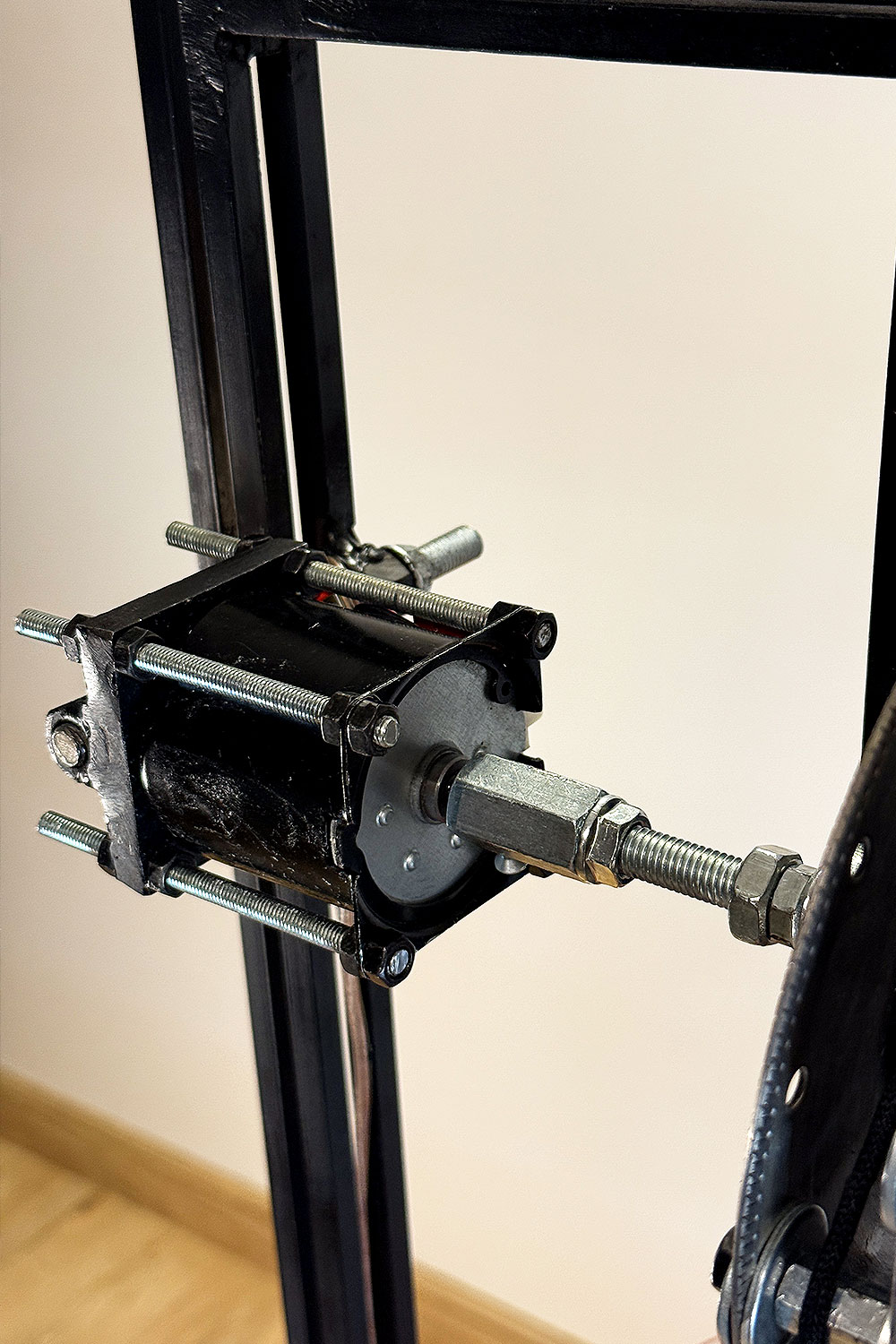
Motor
At the core of the mechanism lies a motor that drives the central axis. Its steady rotation transfers movement to all the discs simultaneously. By controlling the speed of the motor, the overall rhythm of the wave can be altered — producing either a slow, meditative motion or a more dynamic, pulsating flow.
In this way, a simple rotational force is translated into a complex, organic movement, animating the ceramic structure into a continuous wave.
Momentum
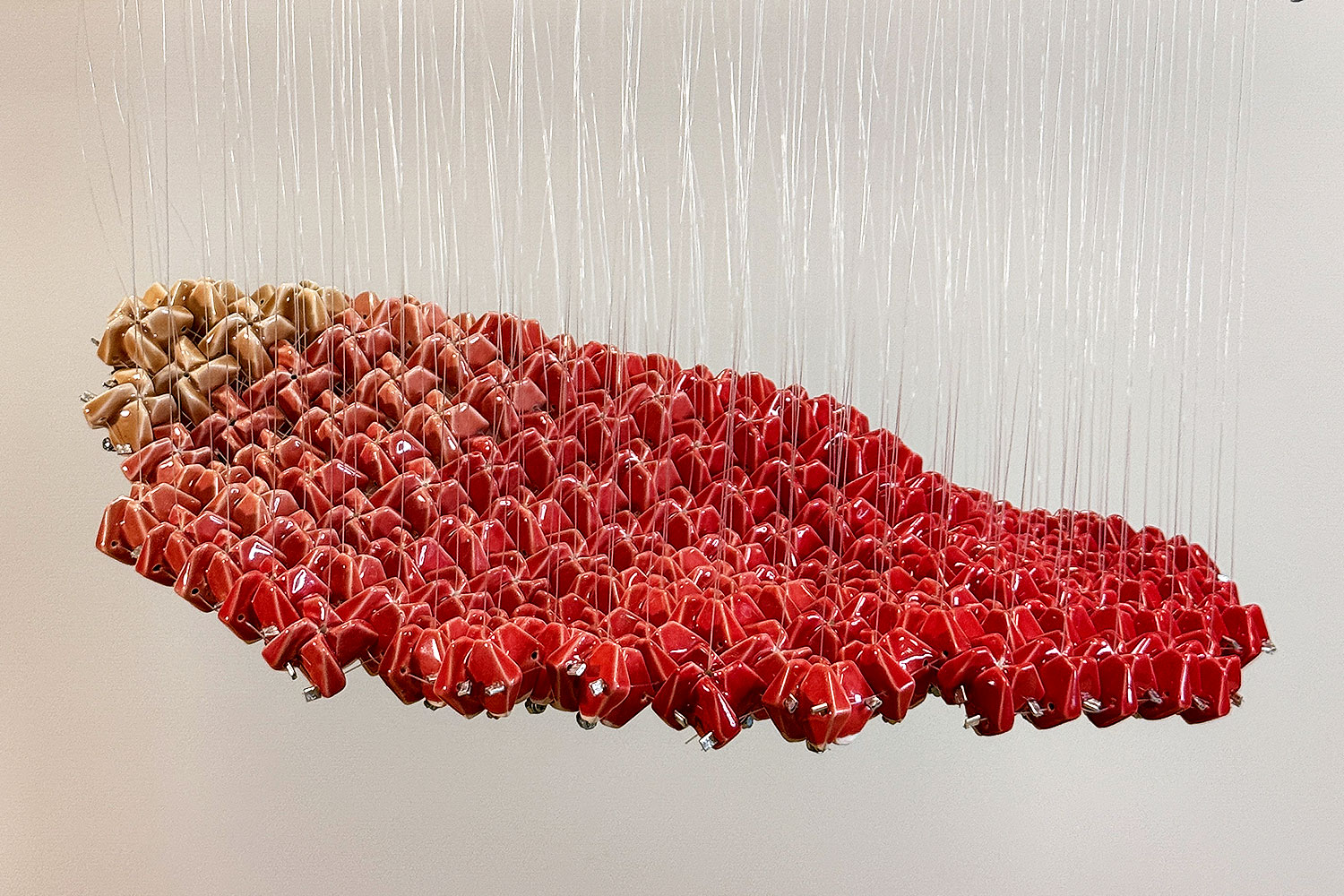
Adaptation is not always a clear virtue.
At times, it allows us to survive in difficult circumstances, and at others, it slowly erases the very boundaries of our existence. On a fragile edge, adaptation can be as creative and generative as it can be destructive and exhausting.
Ceramics became, for me, a metaphor of this very paradox: a material that is hard, solid, and brittle, yet constantly tested by transformation—through clay, glaze, and fire. Much like us, standing before external forces—climatic crises, cultural pressures, or economic shocks—we are compelled to redefine the limits of our own endurance.
This journey is, for me, an attempt to witness the moment when adaptation shifts from a power to persist into a gesture of surrender; a fine boundary between resilience and collapse.
When I assemble ceramic pieces side by side, I no longer see separate forms. Each fragment is like a word, carrying limited meaning on its own, but within a shared structure it becomes part of a new sentence. This ceramic surface is an exercise in perceiving connections—an understanding that strength and flexibility are always born out of the repetition and unity of small elements. Between geometry and emotion, ceramics is redefined.
Adaptation is not always equal to survival. In the real world, there comes a moment when acceptance itself becomes the beginning of erosion. My attempt has been to make this fragile threshold visible—where ceramics pretend to be flexible, and each piece, in relation to the other, creates a network that responds to external forces. Here, the tension between fragility and resilience does not resolve, nor does it vanish—it transforms into a stage upon which the paradox itself can be seen.
